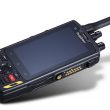So many jobs, so few people
We’ve heard it before, and you know first-hand one of the biggest problems facing this industry is the lack of human resources. In the June issue of MRT, “Public Safety: ’10-2′” columnist David Dunford stressed the need for two-way radio technicians trained in RF. In response to his column, Bruce Bothwell, instructor of electronics at Chemeketa Community College in Oregon, wrote us that the RF industry is facing competition from bigger industry, such as the computer giants.
Hope does exist, however. Another reader let us know that his college is training RF technicians, and that these graduates are looking for jobs. Santa Ana College in Santa Ana, CA, according to Floyd Martin, electronics department chairman, boasts a comprehensive program in communications. He wrote that students receive more than 40 credits of digital and analog theory as well as training in RF measurement techniques before graduating. Martin can be contacted at email address: [email protected] to post your available positions.
Most likely, you are looking for technicians, and another organization is actively working to relieve the problem.
Hats off to GWEC, the Global Wireless Education Consortium in St. Cloud, MN, (www.gwec.org) which is focused on expanding wireless technology curriculum in two-year, four-year, and masters-level academic programs.
Misty Baker, executive director of GWEC, presented GWEC’s message at the International Wireless Communications Expo in Las Vegas in March. When she asked how many in the audience were looking for technicians and engineers, everyone in the room raised a hand.
GWEC estimates that 32,000 technical jobs are currently available and that by 2008, there will be 308,000 open positions in the telecommunications area. The employee pool is just not keeping up with the demand in this industry. Baker said that high school was preparing students for college and college was preparing them for work, but neither was preparing them for jobs in wireless. GWEC is working on that by developing curriculum and adding education and industry partners. Agilent Technologies is the latest to come on board.
GWEC is also starting to work with K-12 programs, which I would definitely recommend. Many people become interested in, or choose, their careers while in high school. Right now, there are art, architecture, journalism, science, vo-tech and music classes in high schools. Why not telecommunications or engineering? Get the kids interested in what technicians do. Show them the newest radio models. Maybe that way, more people will choose the RF path early, and follow up with the education and training.












